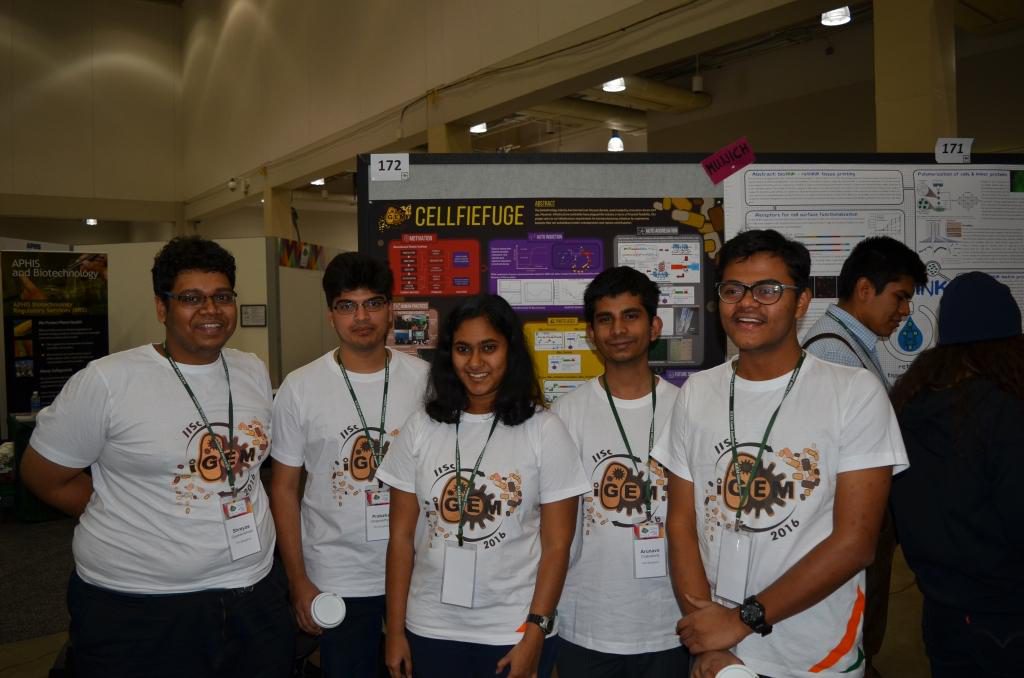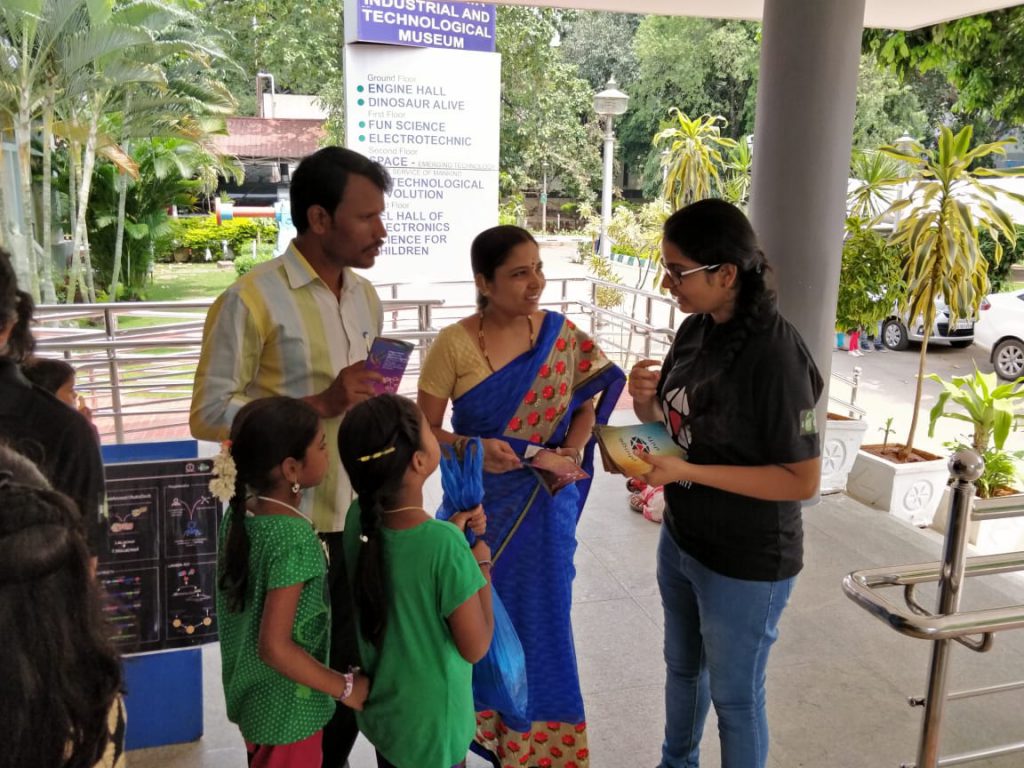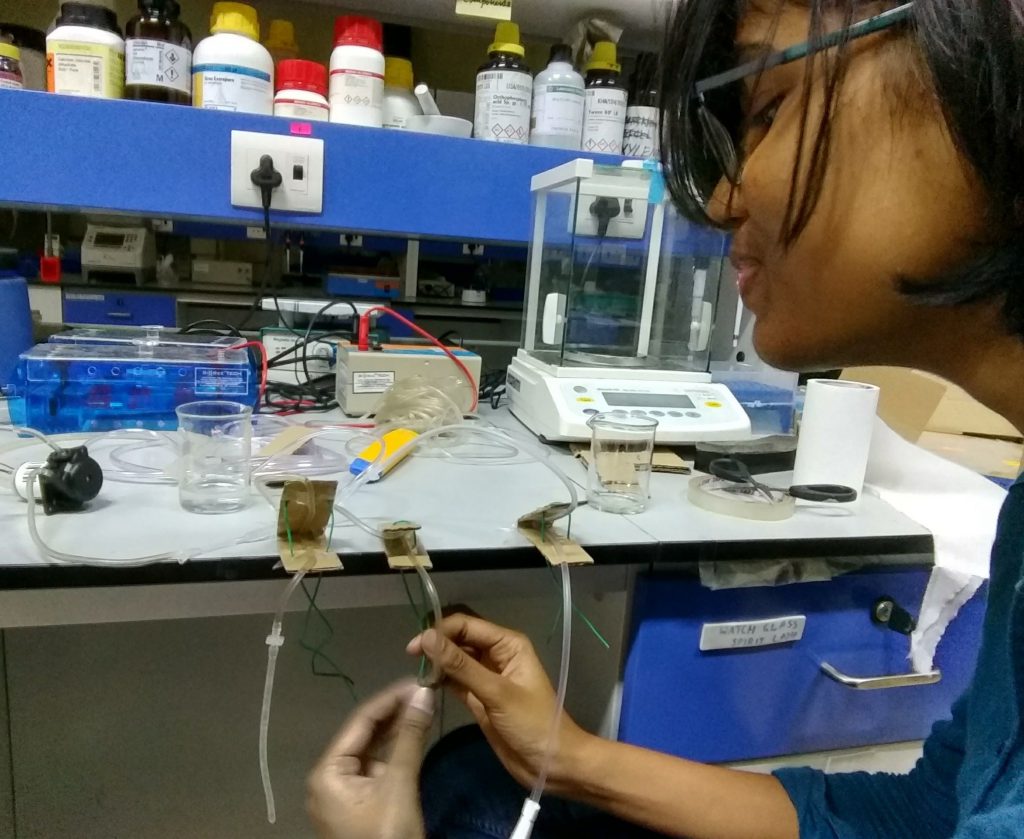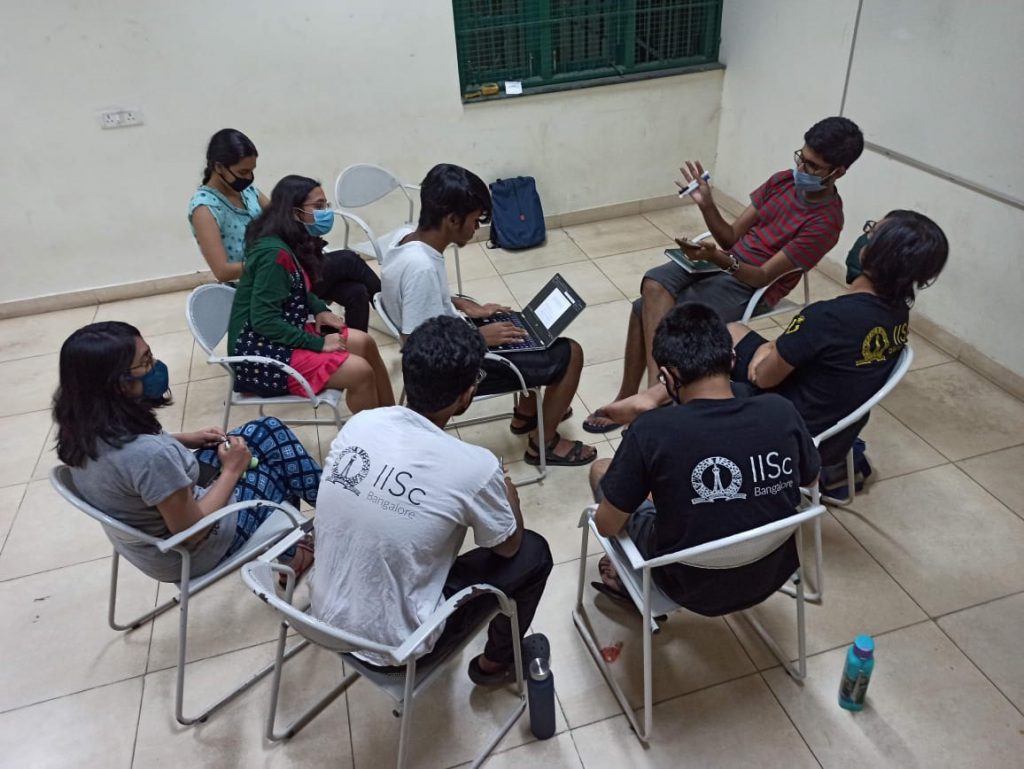An annual synthetic biology competition has spurred UG students to develop novel solutions

In the early 1960s, French scientists Francois Jacob and Jacques Monod figured out how gene expression in bacterial cells is regulated. Since then, scientists began dreaming of manipulating these regulatory circuits in the bacterial genome (the entire set of its genetic material) to synthesise products of interest to humans. The boom in genomics and recombinant DNA technology in the 1990s allowed scientists to alter the hereditary material of an organism to manipulate its form and function. This field, known as “synthetic biology”, has grown tremendously in the past two decades. Synthetic biology attempts to create modified organisms by editing their genome – adding genes for beneficial traits, removing or editing those causing diseases and so on. A well-known example is “golden rice”, a genetically modified beta-carotene-producing variety of rice. Humans, after consuming it, can convert this beta-carotene to Vitamin A, which satisfies our dietary requirement.
Synthetic biology is now used in various areas ranging from agriculture to medicine, to make products such as biofuels or vaccines. While the field has nurtured many useful applications, there are also concerns about the potential for its misuse – in bioterrorism, for example.
One organisation keen on promoting the ethical advancement and beneficial role of this field is the International Genetically Engineered Machine (iGEM) foundation. It is independent, not-for-profit, and hosts an annual competition that invites students from across the globe to push the boundaries of synthetic biology for the betterment of human life. Students work together as a team to design, build, and test a biological system using synthetic biology tools and molecular biology techniques.
At the outset, iGEM might seem like a competition exclusive to biology and engineering disciplines, but often students from arts and design are roped in for a broader perspective. For almost six months, participants work on several facets pertaining to their project including fund-raising, increasing public awareness, and working on developing a unique solution or product in the lab. The competition culminates in a synthetic biology conference called the “Giant Jamboree”. Here, each team presents their ideas and preliminary results. They showcase innovative hardware or new technologies developed to aid their projects. Vectors (carriers) containing the modified genome or plasmids developed by the teams are deposited as “BioBricks” (standardised DNA sequences that can be assembled to form bigger synthetic DNA circuits) in the Registry of Standard Biological Parts. All future iGEM teams have access to these.

IISc undergraduate (UG) students were introduced to iGEM in 2015, when Chaitra Prabhakar and Sachit Daniels, PhD students from the National Centre for Biological Sciences (NCBS), planted the idea of sending a team from IISc to the competition. Over the next few months, a handful of enthusiastic undergraduate students came together and brainstormed more than a hundred ideas, finally choosing what they felt was the most practical one. With support from Umesh Varshney, the then UG Dean and Deepak Saini, both professors in the Division of Biological Sciences, and relentless guidance from UG instructors Narmada Khare and TL Srinath, the team went head-on into the competition.
Being the first IISc iGEM team came with unique hurdles. It wasn’t easy to get many UG students excited about an untried project. “There was one brainstorming session where it was just me and nobody else,” recalls Abhijeet Krishna, a former UG student from IISc who was part of the 2016 team. Mentoring UG students also had its challenges. “When they’re young, they have a lot of restless energy. So, to make them sit still is an effort,” says Deepak. “I remember that I took a bunch of them to the Biotechnology office, Government of Karnataka, so that they could explain their idea and request for funding. And they were so restless; they kept saying, ‘why are we not being called in right away?’” he laughs.
While the science part was easy for them, most team members were not skilled at fund-raising. All iGEM teams receive starter kits with basic plasmids and BioBricks from the organisers at the beginning of the competition, but they have to procure everything else themselves with the help of their mentors. Acquiring funding and dealing with logistics were alien terrains for them. With a lot of perseverance, the 2016 team acquired funds from the Wellcome Trust, the Department of Biotechnology (DBT), Government of India, and the Karnataka State Government, among others.
Let’s settle down, folks!
Over the years, IISc’s iGEM teams have worked on diverse projects where microorganisms are made to do wonderous things. For this they use “Recombinant DNA (rDNA) Technology”, a set of techniques now commonly used in the biotech industry where it has paved the way for the mass production of antibiotics, vaccines and so on. Although the benefits from these products outweigh the production cost in most cases, rDNA technology remains a costly affair, going up to millions of dollars.
At the heart of this technology are monstrous machines called bioreactors. They constantly monitor the growth of the bacterial culture growing inside them, induce bacteria to synthesise a particular product at a specific stage, and finally, separate the bacteria from the newly made product. The last stage is the costliest. The 2016 iGEM team aimed to cut these costs by designing a bacterium that would “know” exactly when to start making the product and to settle down on its own after it is done, minimising the need for a bioreactor. They named this project “Cellfiefuge”.

Bacteria have the fantastic ability to regulate gene expression in response to their population density. This is called ‘quorum sensing’. The team designed a bacterial strain that responded to two separate densities. The cells would synthesise the product of interest when the first density level was reached and would then synthesise a “sticky” surface protein after the second density level was reached. The “sticky” protein molecules on the surfaces of bacterial cells would cause them to aggregate into large clumps and settle down. In October 2016, Arunavo Chakraborty (the team leader), Prabaha Gangopadhyay, Shreyas Gopalakrishnan, Abhijeet Krishna, and Aiswarya Prasad visited Boston, USA, to participate in the iGEM Giant Jamboree. The IISc Alumni Association of North America (IISc AANA) funded their travel and hosted them. The team won a bronze medal for their maiden attempt, encouraging the future batches to actively participate.
I feel bloated
Continuing with the theme of amazing bacteria, the 2017 team was inspired to use bacteria for bioremediation (using living organisms to clear out contaminants, toxins, and other pollutants). Oil spills caused during extraction or transportation of oils are harmful to aquatic ecosystems. The technologies used to clear these spills are wildly expensive and time-consuming. Another cause for harm to aquatic ecosystems are the fast-growing algal blooms. These algal cells cover the surfaces of water bodies, preventing adequate oxygen supply to the aquatic life growing below.
Like how two wrongs can make a right, the team conceived a possible solution for oil spills by imagining floating networks of oil-degrading bacteria inspired by algal blooms, in a project they called ‘iFLOAT’. Algal cells stay afloat by producing gas vesicles. Getting bacteria to do the same in the lab was painstaking. The team was partially successful in engineering a bacterial strain that could not only make gas vesicles within their cells, but also release them into the growth media outside. The potential application of this project is the production of a mesh of vesicles coated with oil-degrading enzymes called lipases, and using them to efficiently clear oil spills.
The 2017 team conceived a possible solution for oil spills by imagining floating networks of oil-degrading bacteria inspired by algal blooms, in a project they called ‘iFLOAT’
The 2017 team also developed a new tool. Working with bacteria means long tedious hours in the lab, waiting for them to reach the sweet spot of optimal population density. The team found a way around this by engineering a novel gadget. Enter the Growth Curve and Optical Density Device, or GCODe! This instrument measures the bacterial density in real time and one can track it using a smartphone. This innovation won a consolation prize at the Giant Jamboree that year, and the team won a gold medal.
Pausing during the pandemic
As the world was reeling from the COVID-19 pandemic, IISc remained shut. The labs were closed. Participating in iGEM in 2020 was out of the question, but this didn’t stop the UG students from planning for iGEM 2021. This year’s project was also centered around bioremediation, but this time focusing on combating the harm caused by chemical pesticides.
Farmers in India continue to use chemicals of the ‘organophosphate’ family as pesticides, despite the fact that they have been banned elsewhere in the world. These are toxic compounds that can leach into groundwater and are harmful if consumed. The 2021 team synthesised a bacterial cellulose sheet to use as a filter. This filter was coated with organophosphate-degrading enzymes that can effectively rid the water of these toxins. The filter, called ‘CellOPHane’, can be custom-made to degrade other harmful compounds as well, by coating it with appropriate enzymes.
The 2021 team also made promotional videos in English, Hindi, Malayalam, Kannada, Tamil, Odia, and Bengali
As part of public engagement, the 2021 team also made promotional videos in English, Hindi, Malayalam, Kannada, Tamil, Odia, and Bengali. They have also provided subtitles in Telugu and Marathi. This was probably the first attempt of its kind to reach a wider audience, the team says. “We have not come across any other team that has made a video in so many languages,” says UG student and team leader Sukriyo Chakraborty, proudly. The team went on to win a gold medal at the Giant Jamboree meet-up that took place in Goa in November 2021.
After iGEM
The participants’ association with iGEM does not end with the Giant Jamboree. Some iGEM projects have gone on to inspire start-up companies. Sea6 Energy, a company incubated in IIT Madras, was born out of their Institute’s iGEM project in 2009. ‘After iGEM’ is an initiative by iGEM for participants to remain associated with the organisation and participate in
dialogue about synthetic biology. Aiswarya Prasad from the 2016 team participated in the United Nations Convention on Biological Diversity held in Sharm El-Sheik, Egypt in 2018. She explains that biotechnology is growing at a pace that no one imagined, and many of the laws and framework have fast become obsolete. “[Therefore] as scientists, there’s a lot of scope to participate in these conversations, because there is just not enough of a voice coming from [them],” she says.

The iGEM journey that students embark upon is a long one. What takes the longest is zeroing in on a feasible project idea. The three months of summer vacation are spent working on this idea, but time is never enough. A synthetic biology project involves standardising protocols specific to the new genetically engineered organisms and monitoring their growth. The work often spills over into the academic year, and this becomes problematic, since the undergraduate coursework at IISc is pretty gruelling. Juggling this hectic coursework – which is meant to prepare them for higher studies – with iGEM can be challenging for the students, says Dipshikha Chakravortty, Professor in the Department of Microbiology and Cell Biology, who has mentored the iGEM teams for the past four years. “The students participating in iGEM need more time to complete their experiments,” she says. To tackle this issue, the teams need to start working on their projects much earlier, at least two years in advance, suggests Sandeep Eswarappa, Associate Professor in the Department of Biochemistry and one of the mentors of the 2018 team.
By all accounts, iGEM has had a lasting effect on its participants. Former participants say that the experience has helped them acquire useful skills and make helpful connections. Over the course of the journey, they have all fought, made up, agreed, disagreed, worked together and ultimately remained friends.
Sangeetha Devi Kumar is an Integrated PhD student at the Department of Biochemistry, and a former science writing intern at the Office of Communications, IISc




